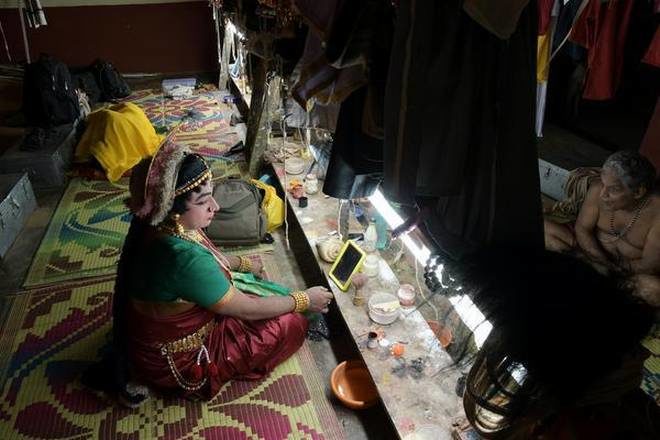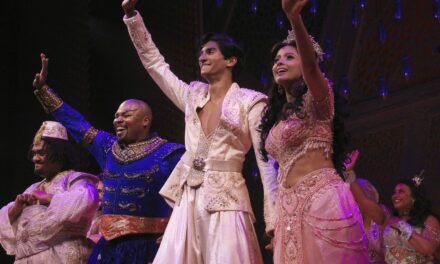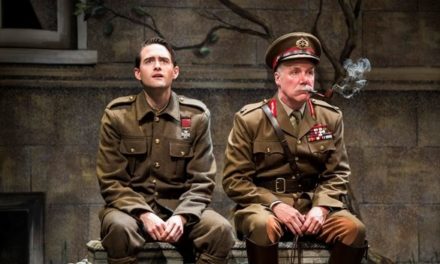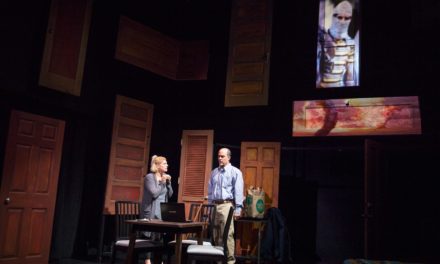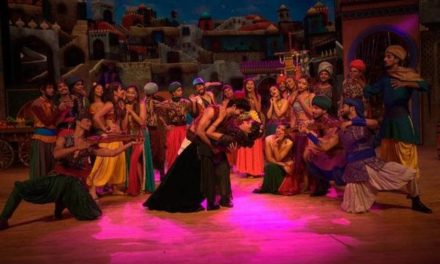For six straight months every year, a tiny village comes alive with all-night Yakshagana.
A five-kilometer, narrow, gravelly stretch branching out from Honnavar-Bengaluru National Highway leads to the village of Gundabala in Uttara Kannada. One would miss the road but for a board at the Hadinabala junction that reads: Way to Gundabala, “Yaksha Kashi.”
As dusk sets in, music envelopes the quiet village. A stage erected on a spacious ground in front of the Mukhyaprana Lakshmi Venkatesha temple, home to the village’s presiding deity, slowly comes alive.
Situated on the banks of a rivulet and surrounded by areca palms and the Western Ghats, it offers the perfect ambiance for the traditional theatre art of Yakshagana.
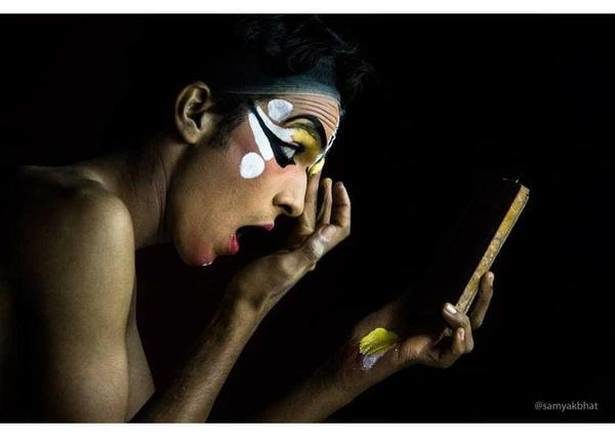
Credit: Samyakbhat
Dance for a wish
For decades now, this little-known village has been home to a unique tradition—all-night Yakshagana performances that begin around 9 p.m. and go on until 6 the next morning. These performances are sponsored by devotees who come from near and far to “offer” them to the deity for wish fulfillment. The night-long shows begin December-January, on Margashira Shuddha Dashami day, and culminate on Vaishaka Shuddha Asthami day ( May-June).
No performances are staged during the monsoon. With around 1,600 pre-booked shows, all-night Yakshagana slots for the next eight years are full.
This evening’s show has been sponsored by a Mangaluru resident, Ramachandra Bhat Ullal, aged 58 years, a freelance news photographer. He booked the show last October with a ₹100 in advance, he tells me and is here with his wife and two friends who stay on until the morning.
By around 1 a.m., the audience dwindles to 12 but that does not seem to deter the performers. Ravi Kumar Kondli, a B.A. student who played the role of Abhimanyu in the play, tells me the benches often empty out after midnight. Only the sponsoring families stay till the end.
“We just look at the sanctum sanctorum in front of us and believe the deity is watching our performance,” says Kondli, who studies in a government college in Honnavar, 15 km away.
The Yakshagana troupe, Sri Mukhyaprana Prasadita Yakshagana Mandali, is permanently stationed in Gundabala and has about 26 artists, 15 of whom are permanent. The rest are guest artists from touring groups.
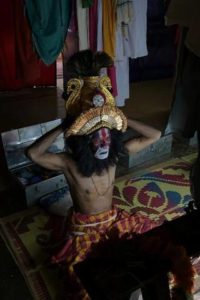
Rehearsal tradition
“Many artists perform here for free as an offering to the deity,” says Prabhakara Hegde Chittani, manager of the mandali.
Nearly all the big names of the Badaga Thittu style of Yakshagana—Keremane Shivarama Hegde, Keremane Shambhu Hegde, Mahabala Hegde and Chittani Ramachandra Hegde—have performed here, he says.
The performers are paid as little as ₹400 per performance whereas their counterparts in the coastal belt take home anywhere between ₹500 and ₹4,000 per day, says Chittani. Devotees pay ₹5,500 per show.
The exact origins of this tradition are not known. But Hostota Manjunatha Bhagavatha, a senior Yakshagana artist, writes in a temple souvenir that many years ago Gundabala was a transit point for Yakshagana troupes traveling from the coast to Malnad and the hinterland. The artists may have used the village for rehearsals during the night and over time, it became a tradition.
Changing episodes
Over the years, as the number of bookings went up, the temple administration extended the performance period from 45 days to six months, starting in 1985, says temple trustee Maruti Prabhu.
About an hour’s “prasanga” or episode is reserved every morning for budding artists. It serves as training ground for them, say temple authorities, as the mandali is a healthy mix of senior and junior performers.
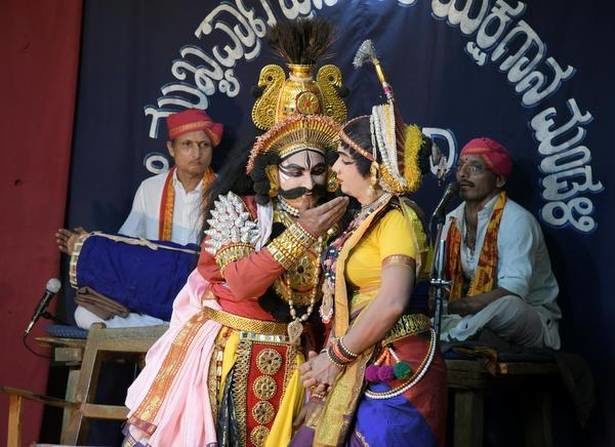
“We learn a lot from the seniors during the prasangas,” says Kondli.
The “prasanga” of the night is decided a couple of hours before the event, and the episodes change every day, posing a challenge to artists.
“They learn of their roles only after 7 p.m. and they have to know mythology well enough to be able to perform in the morning,” says a temple official.
After the season, artists go back to their farms. But today, the term “off-season” is becoming obsolete. Happily, even after the season, Yakshagana performances are held in towns and cities across the country including Bengaluru, Chennai, Mumbai, Mangaluru, and Hyderabad, where Yakshagana still holds crowds in thrall.
This article first appeared in The Hindu on April 7, 2018, and has been reposted with permission.
This post was written by the author in their personal capacity.The opinions expressed in this article are the author’s own and do not reflect the view of The Theatre Times, their staff or collaborators.
This post was written by Raviprasad Kamila.
The views expressed here belong to the author and do not necessarily reflect our views and opinions.

